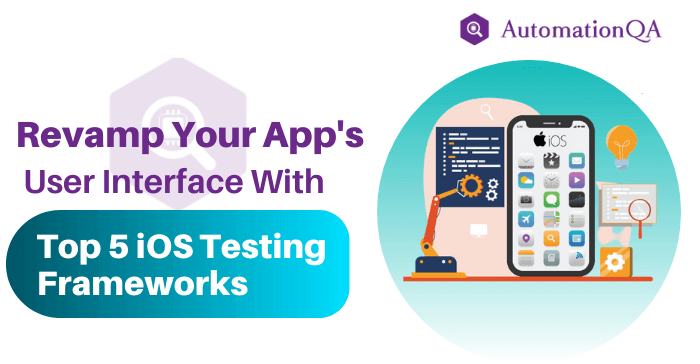
The last few years have seen a fantastic boost in mobile testing tools for backing mobile app development. The continuous growth in the sphere of application creation has opened the path for plentiful tools and frameworks facilitating a more instantaneous development process. With over 2.2 million apps in the Apple store, there is continual competition on the go.
Are you prepared to soar to new levels in your app development expertise? Discover the top 5 iOS UI testing frameworks turning heads and transforming how developers create top-notch apps. Say goodbye to glitches and hello to impeccable user experiences – it’s time to leave the competition in the dust! Dive into these groundbreaking frameworks and start creating truly remarkable apps today.
Master the art of app perfection with the 5 ultimate iOS UI testing frameworks – it’s time to elevate your game.
5 Leading iOS UI Testing Frameworks To Consider in 2023
If you need clarification on which framework would work best for you, the following would serve as the best guide. Each framework has its strengths and weaknesses, let us dig into the same.
1. Appium
Appium is one of the most prominent names in the open-source test framework. It permits QA engineers to automate cross-platform (iOS and Android) mobile apps. Appium is a product of Dan Cuellar, who built it in 2011. It was in 2012 when this was made an open-source, followed by the release of the first version of Appium, namely, Appium 1.0, in 2014. Developers find ease in working with Appium since it permits them to build automated tests of mobile applications.
Benefits:
- This iOS framework backs any WebDriver-compatible language, including Objective-C, Java, and JavaScript.
- It’s developed on a similar JSON wire protocol to Selenium, enabling mobile developers to transition swiftly.
- One can test native, hybrid and mobile web apps simultaneously running both iOS and Android OS through it.
- You can select your underpinning frameworks like XCTest or XCUITest for unit testing.
2. Detox
This one is similar to Appium and is an end-to-end automation framework suited for experimenting with cross-platform mobile apps. This iOS application is supposed to be utilized as a Node.js library in the test code, so tests can be penned in JavaScript. This one is also an open-source framework. This framework can be attached to any Continuous Integration structure and reputed cloud testing services. It also offers immediate feedback on E2E test cases.
Benefits:
- This functions on cloud-based real devices and emulators.
- It backs cross-platform tests.
- It is test runner independent and can function on anything that supports JavaScript.
- This framework attempts to promise that your app is inactive before enabling automation to proceed.
3. EarlGrey
This one is developed by the popular Google and is an open-source native test framework utilized for automated UI testing in iOS. Google utilizes this framework internally for operational testing of native apps like Google Calendar, Google Photos, YouTube, Google Translate, and more. It is to be noted that Earl Grey is solely for iOS, and the tests need to be produced in Objective-C or Swift. One of the most popular advantages of using EarlGrey is it carries Espresso’s synchronization features to iOS testing.
Benefits:
- It offers seamless inclusion in an iOS project.
- It offers an adaptable framework fused with robust synchronization components across internal segments.
- The entire framework is open source and can be integrated with XCode.
4. XCUITest
This is one of the regular iOS UI testing frameworks that function on iOS devices like iPads and iPhones. This segment of Apple’s testing framework was developed on top of XCTest, a unit testing framework. It has extra classes for better UI testing, like UIAccessibility. The users create test cases in Swift or Objective C. This also puts forward a framework that enables the developers to automatedly recognize and communicate with UI elements.
Benefits:
- This application and test code can be developed in similar languages (Objective-C or Swift), edited completely within XCode, and accumulated in similar storage.
- The UI tests might execute more quickly as compared to other frameworks.
- It functions directly at the object level, making supervision effortless if any app modifications are required.
5. OCMock
It is a mock object testing library for developing stubs in iOS apps. There is a crucial place for mock objects in software testing since they enable a QA engineer to imitate the behavior of complicated and real objects. This one has two options: a static library for iOS development and a framework for OS X development.
Benefits:
- One of the seamless ways of adding mock objects to prevailing unit tests.
- It is open-source and compatible with Objective-C.
- OCMock fosters TDD by enabling developers to create mock objects before implementation, guiding the development process with test-driven writing.
Final Thoughts
So, these iOS UI testing frameworks can be your secret key to unlocking unparalleled app performance and user satisfaction. Embrace these cutting-edge tools, and pave the way to a future filled with exceptional, innovative, and memorable apps that will leave a lasting impression on users. The time has come to elevate your game and redefine the app development landscape!
